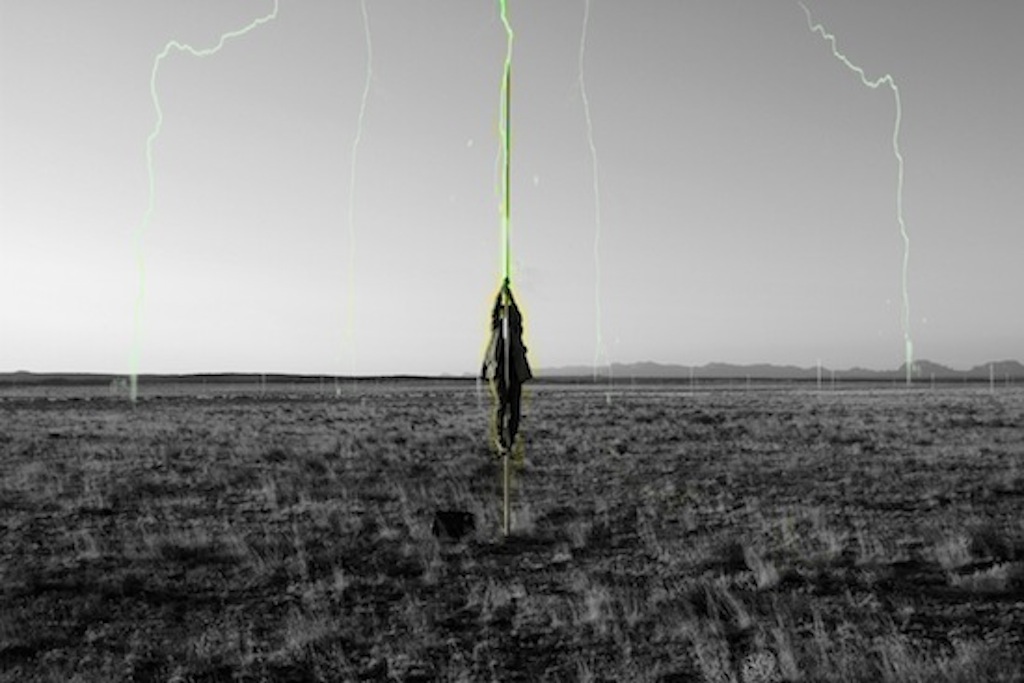
© Stephen G. Rhodes
Migros museum für gegenwartskunst Limmatstrasse 270 8005 Zürich France
The sprawling installations of the American artist Stephen G. Rhodes (b. Houston, Texas, 1977; lives and works in Berlin and New Orleans) combine a variety of media and are based on historical and cultural sources. Rhodes creates distinctive restless and elliptical systems in which he addresses issues such as repression and trauma. The Migros Museum für Gegenwartskunst presents The Law of the Unknown Neighbor, the artist’s first solo show at a European art institution.
For his installation The Law of the Unknown Neighbor, Rhodes draws on the famous “Lecture on Serpent Ritual: A Travel Report” (also known as “Images from the Region of the Pueblo Indians of North America”) Aby Warburg (1866–1929) delivered in 1923 at the Bellevue psychiatric hospital in Kreuzlin- gen, where he was a patient. Warburg examined the serpent ritual of the Hopi in the perspectives of art history, religious studies, and anthropology. His observations pay particular attention to the ser- pent as a lightning symbol. Generalizing from the serpent as embodying the equivocation of fear and reason, of deathly menace and healing power, Warburg develops the concept of an underlying polarity that, he argues, is discernible in any symbol. But Rhodes is interested in more than just the lecture’s content; he also considers its genesis and the historical context: in the late nineteenth century—around the time of Warburg’s trip to the American southwest, where he attends the Hopi serpent ritual as an observer—the expulsion and genocide of the native American population, which has been going on throughout the nineteenth century, is gradually coming to an end. In 1921, Warburg, suffering from a bipolar disorder, was compelled to repair to the Bellevue sanatorium in Kreuzlingen. The psychiatrist Ludwig Binswanger believed that Warburg’s work on his scholarly endeavors had “therapeutic po- tential” as part of his stay at the hospital; preparing the lecture, in particular, would be a sort of “hea- ling process.” Rhodes also explores Warburg’s “Library for the Study of Culture,” which had to be relocated from Hamburg to London in 1933—shortly after Warburg’s death—to save the books from the National Socialists. Rhodes’s interest in Warburg is not limited to the reconstruction of dates and facts, but is more comprehensive. The artist explains: “The biographical détournement in this case is the subject of Aby Warburg. It has to be stated, first of all, that the subject I use of course refers to Warburg, but it is a confabulation of the subject and his westward journey reimagined from the sana- torium, and in turn my sanatorium. I am using the elliptical timeline charted out in Warburg’s bio- graphy as the underlying grid for my associative drift. There are three events in Warburg’s life that I seize upon to generate a formal structure: the Warburg library and its transference out of Hamburg; Warburg’s American journey and escape to the Southwest; and his return to Binswanger’s Bellevue sanatorium. The elliptical circulation of these events shapes an elusive triangle. They are all forma- tive moments and movements of refuge or transference.”
The Law of the Unknown Neighbor consists of furniture objects such as hospital curtains and library shelves. Rhodes also projects short looped sequences onto walls and curtains—a form of presenta- tion that may be seen as drawing on the tradition of Expanded Cinema. As Rhodes puts it: “In my work, [the loop] extends [...] echoing in some cases onto the two-dimensional works, and of course in the choreography of the narration and citation, the storytelling.” The consequent lack of control and com- mand on the artist’s part also points to the issue of trauma, a central theme in Rhodes’s art. In the artist’s view, it constitutes a form of historiography distinguished by its non-linear character.

© Stephen G. Rhodes
Stephen G. Rhodes has presented his art in solo exhibitions at Galerie Isabella Bortolozzi (2012), the Hammer Museum, Los Angeles (2010), and elsewhere; in 2009, he contributed to the New Museum Triennial, New York. The exhibition at the Migros Museum will be accompanied by the first monograph about Stephen G. Rhodes; including essays by Raphael Gygax, Brian Price, John David Rhodes, Stephen G. Rhodes, Laurence A. Rickels, and Keston Sutherland, it will be published by JRP|Ringier.
Vignette & photos © Stephen G. Rhodes

